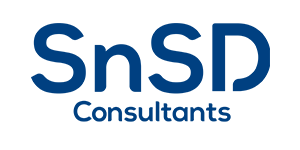Emerging Paradigms in Safety: A Call to Action for HSE Professionals
Emerging Paradigms in Safety: A Call to Action for HSE Professionals
Over the past few years, there has been a growing consensus on the need to move beyond traditional safety approaches. While conventional methods have contributed to improved workplace safety, serious incidents and fatalities (SIFs) persist. To address these challenges, new paradigms are emerging that redefine how we think about and manage safety. This article outlines four key shifts shaping the future of safety and offers practical insights for HSE professionals striving to drive meaningful change in their organizations.
1. Doing Safety Work vs. Doing Work Safely
One of the most fundamental shifts in safety thinking is moving away from compliance-driven safety work toward embedding safety into daily operations. Many organizations focus on ticking boxes—ensuring forms are completed, audits are passed, and compliance metrics are met. However, these activities do not necessarily translate into a safer workplace. The real question HSE professionals must ask is:
- Are we spending more time on paperwork than on ensuring work is done safely?
- How can we shift the focus from meeting regulatory requirements to enabling frontline workers to perform tasks safely?
- Are traditional training modules equipping employees to handle real-life safety challenges effectively?
Action Point: Review safety training and compliance processes to identify activities that add real value to frontline safety rather than just fulfilling bureaucratic requirements.
- Read: An ethnography of the safety professional’s dilemma: Safety work or the safety of work? By David J. Provan⁎, Andrew J. Rae, Sidney W.A. Dekker
2. Doing Safety Differently: Shifting Focus to Serious Injuries and Fatalities (SIFs)
For decades, many organizations have pursued a “Goal Zero” approach—aiming for zero incidents. While this goal is noble, it can lead to an overemphasis on minor incidents rather than focusing on preventing catastrophic events. Leading safety thinkers such as Sidney Dekker and Todd Conklin advocate for a more effective approach: prioritizing the identification and mitigation of SIFs.
Key Considerations:
- How do we ensure that safety programs address high-risk scenarios rather than just minor rule violations?
- Are we tracking and analyzing data on high-potential near misses leading to potential fatalities and life-altering injuries, rather than focusing solely on lagging indicators like injury rates?
- Are we investing in systems and processes that prevent the most severe incidents?
A notable industry initiative addressing SIF prevention is the International Association of Oil & Gas Producers (IOGP) Fatality Prevention Initiative (FPI). This initiative provides a structured approach to identifying and controlling life-altering hazards by promoting leading indicators, learning from incidents, and reinforcing the importance of robust risk controls. Organizations adopting IOGP’s FPI principles can better align their efforts with proven industry strategies to reduce SIFs.
Action Point: Shift incident analysis toward identifying patterns in high-risk activities and near misses that have the potential for serious consequences. Explore the IOGP FPI framework to enhance existing safety strategies.
- Watch: Sidney Dekker & Todd Conklin – Do Safety Differently
- Read: link
- Check out material in IOGP’s website PFI link
3. Building Psychological Safety: Encouraging Open Reporting and Learning
A psychologically safe work environment is one where employees feel free to speak up about risks, mistakes, and safety concerns without fear of blame or punishment. Research by Amy Edmondson highlights how organizations with high psychological safety are better at learning from errors and improving overall safety performance.
Critical Questions for HSE Leaders:
- Do employees feel comfortable reporting safety concerns and mistakes?
- How do leaders in the organization respond when they receive bad news? Are they punitive, or do they seek to understand and learn?
- What mechanisms are in place to encourage open communication about safety?
Action Point: Train leaders on how to respond constructively to bad news and near-miss reports, reinforcing a culture of learning rather than punishment.
- Watch: Amy Edmondson – Psychological Safety
- Read: Link
4. Creating Fail-Safe Workplaces: Designing for Human Performance
No matter how much training and behavioral reinforcement is provided, people will make mistakes. Instead of focusing solely on modifying human behavior, safety professionals should design environments where errors do not result in serious harm. The principles of Human Performance emphasize designing work processes that account for human limitations.
Key Strategies:
- Design equipment and workflows that reduce the likelihood of human error.
- Simplify compliance at the frontline to ensure safety procedures are easy to follow.
- Implement engineering controls that minimize the impact of mistakes.
Action Point: Assess workplaces for opportunities to implement fail-safe mechanisms, reducing reliance on behavioral controls alone.
- Watch: Human Performance Principles
- Read: link
Moving Forward: How HSE Professionals Can Lead the Change
As safety professionals, we must drive these emerging paradigms within our organizations. The following actions can help embed these principles into safety management:
- Engage Leadership: Educate executives on the benefits of shifting from compliance-focused safety to operational safety excellence.
- Reassess Training Programs: Ensure training focuses on real-world risk mitigation rather than procedural compliance.
- Encourage Open Dialogue: Foster an environment where workers feel safe reporting concerns and errors without fear.
- Redesign Systems: Focus on eliminating hazards and designing fail-safe environments rather than merely expecting perfect human performance.
By adopting these emerging paradigms, HSE professionals can play a crucial role in transforming workplace safety, reducing serious incidents, and fostering a culture that truly prioritizes well-being. The future of safety lies not in more checklists but in smarter, more adaptive approaches that empower workers to do their jobs safely and effectively.



